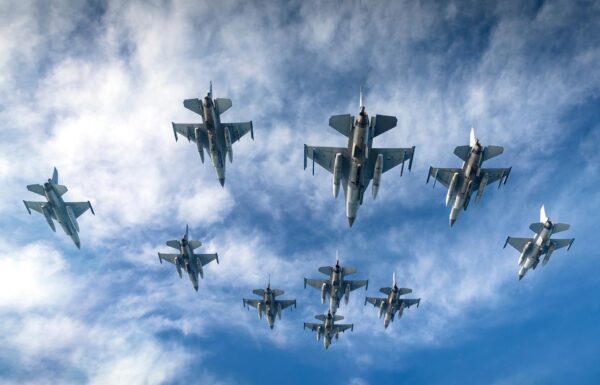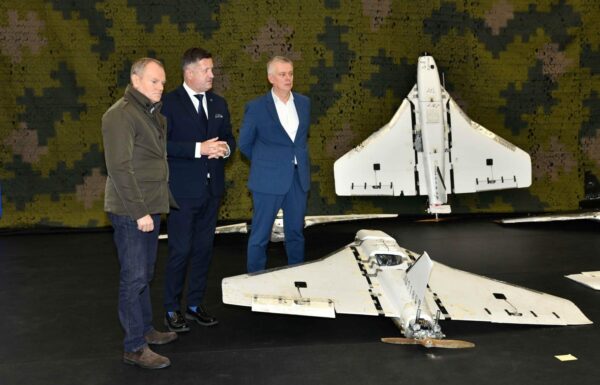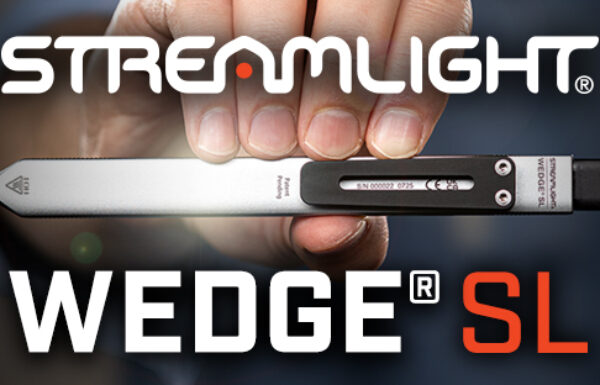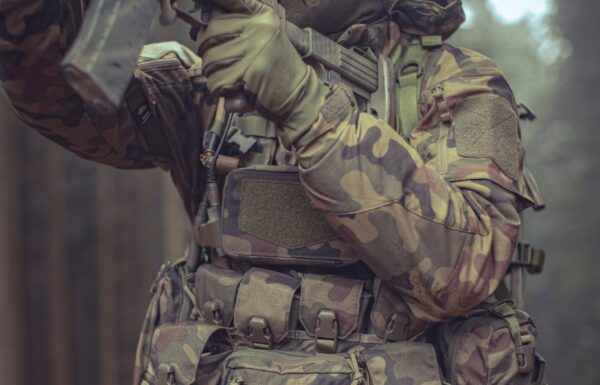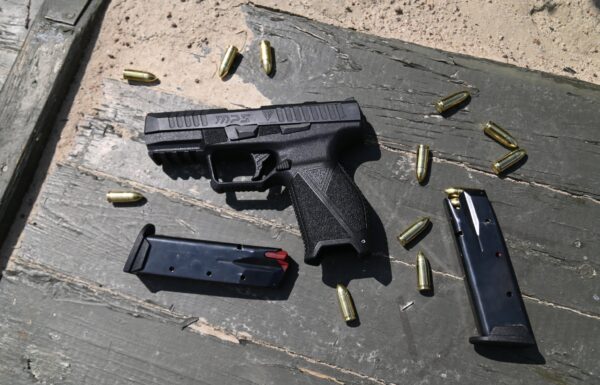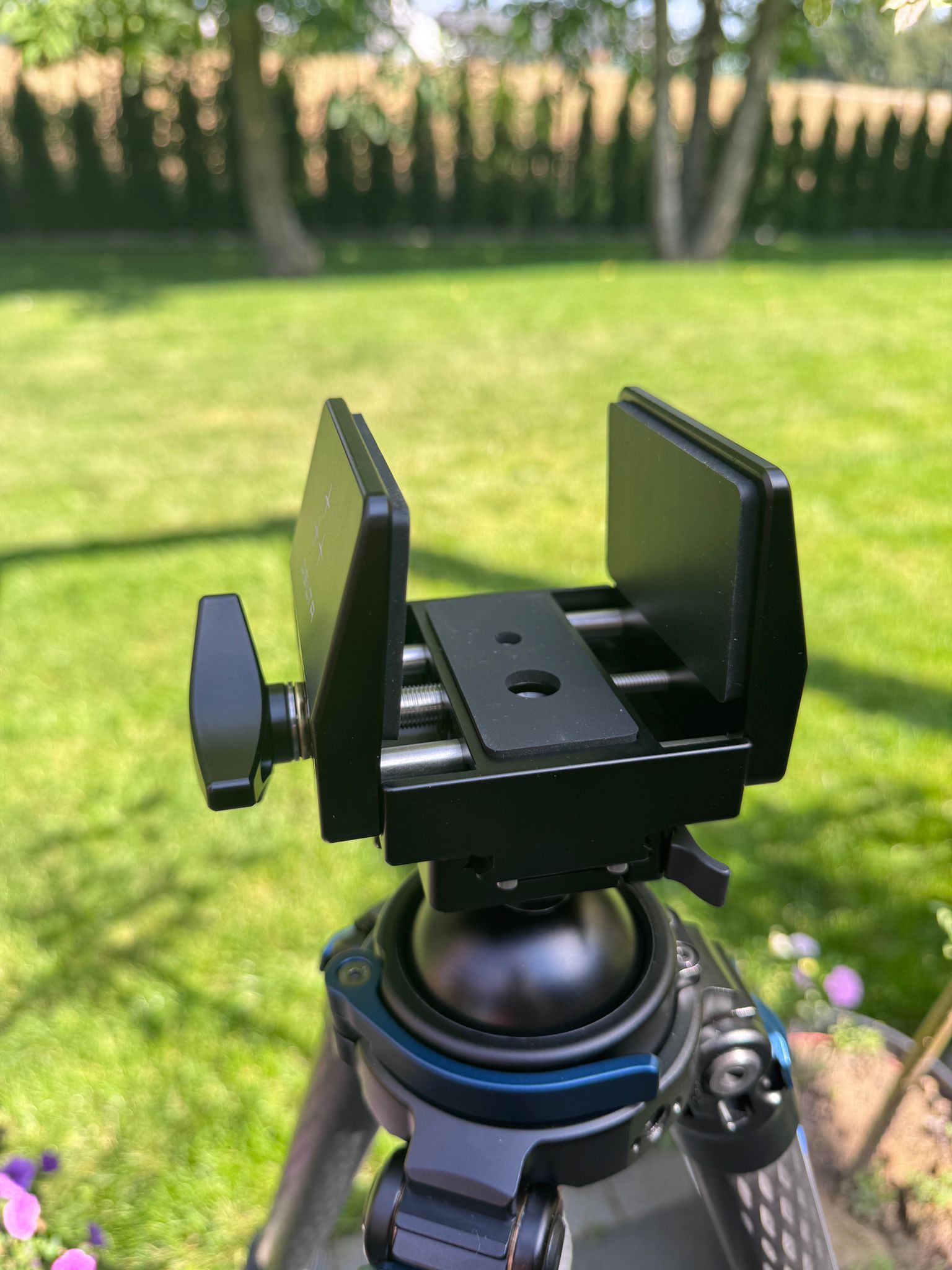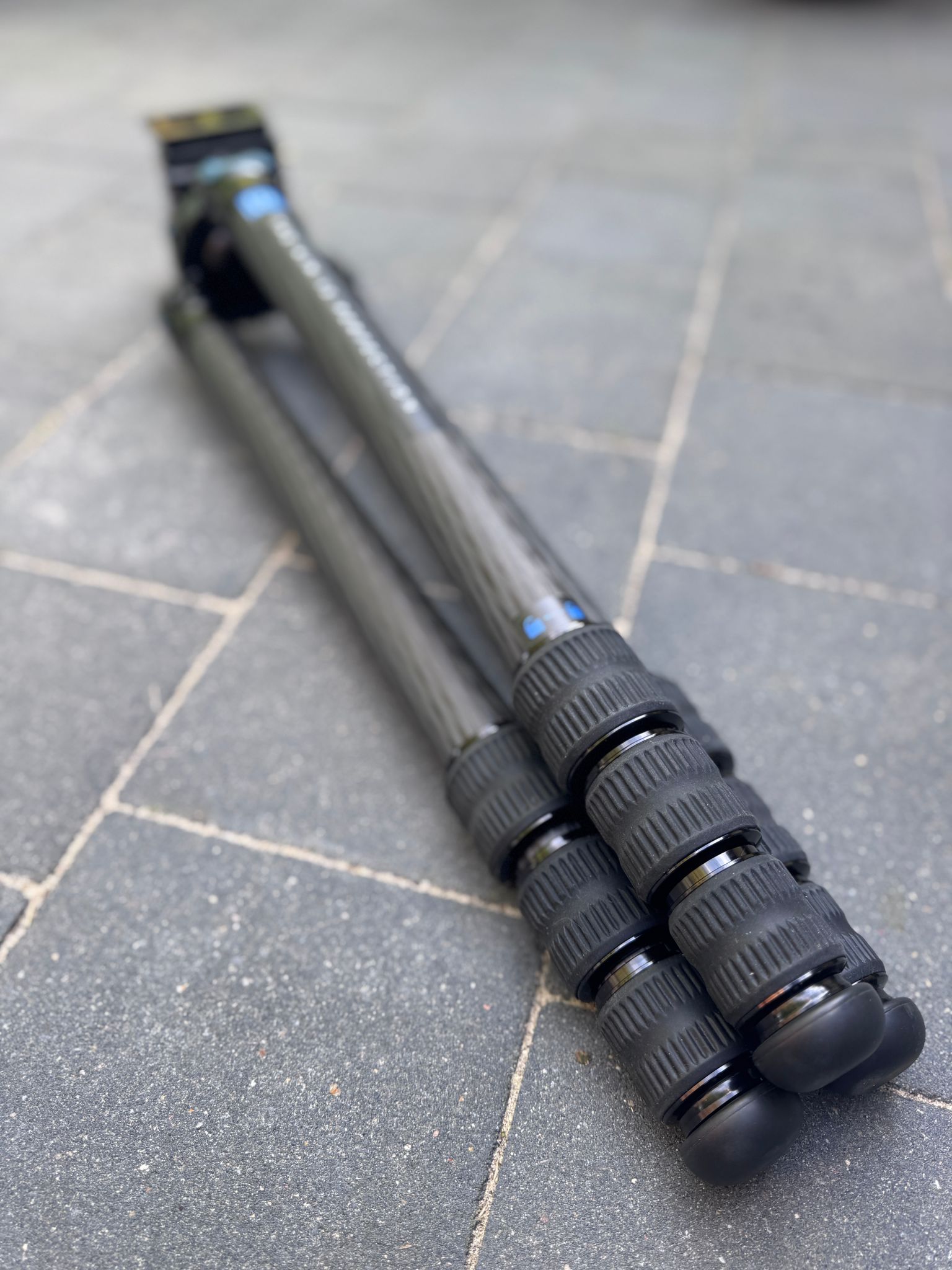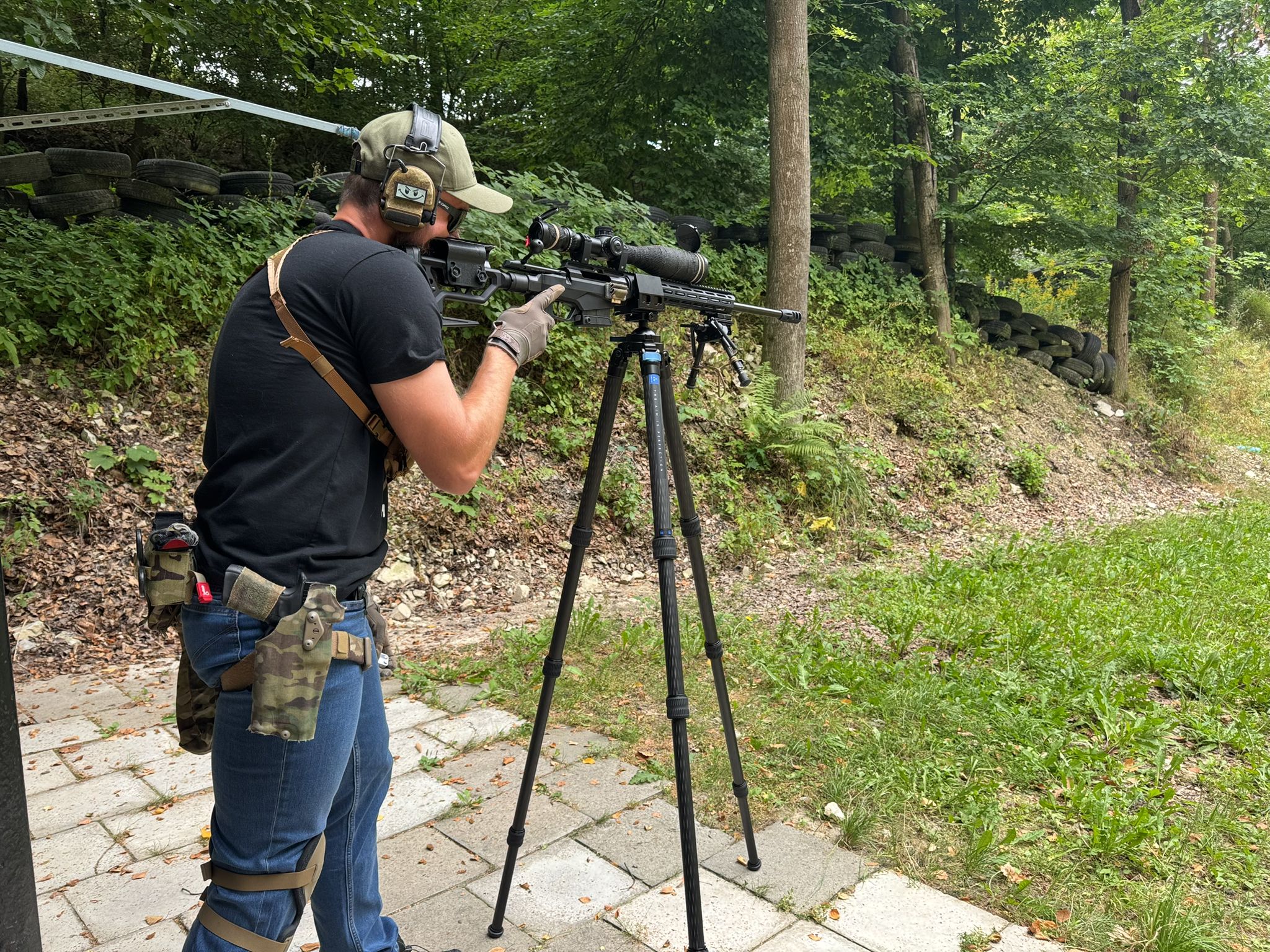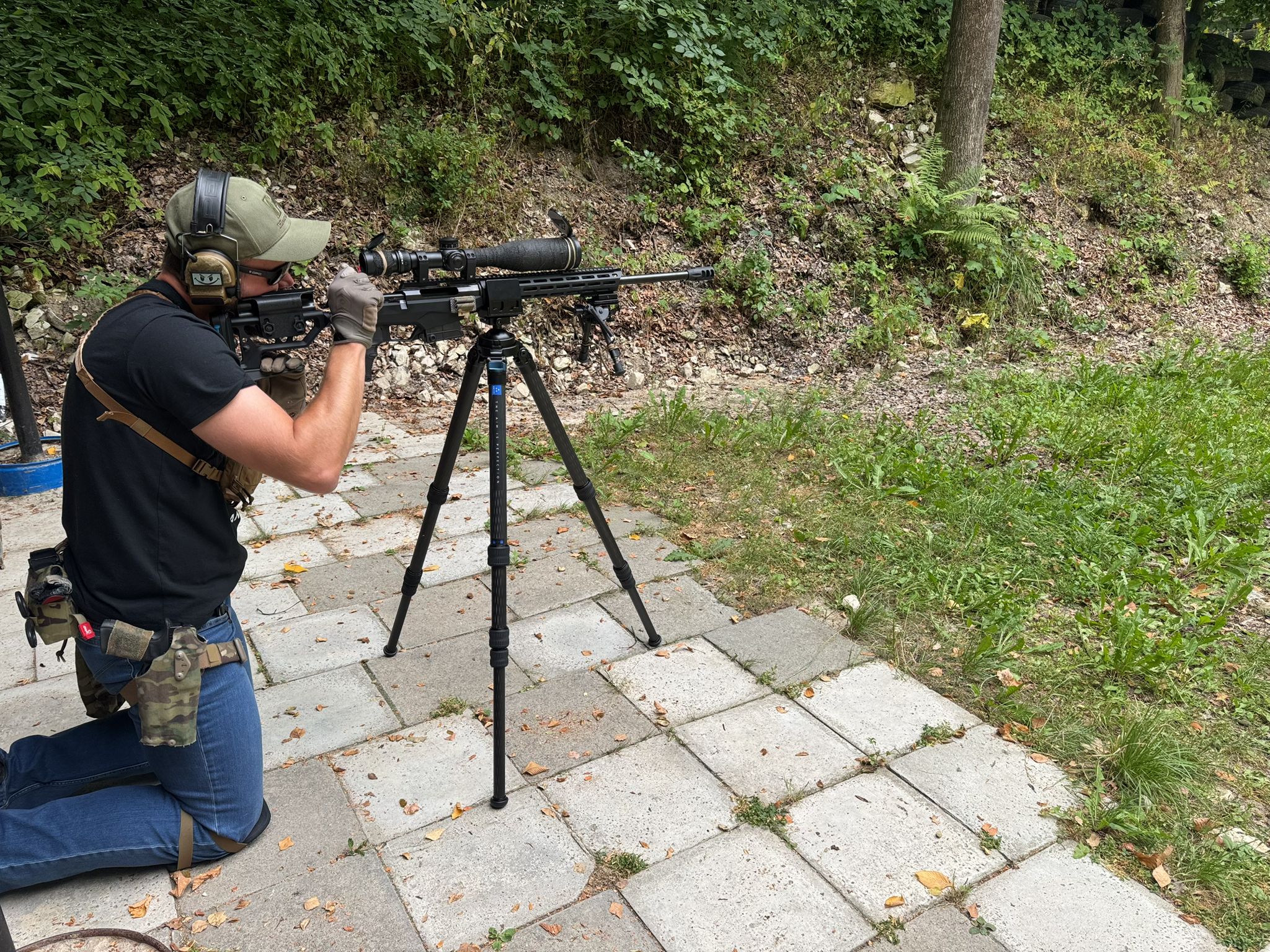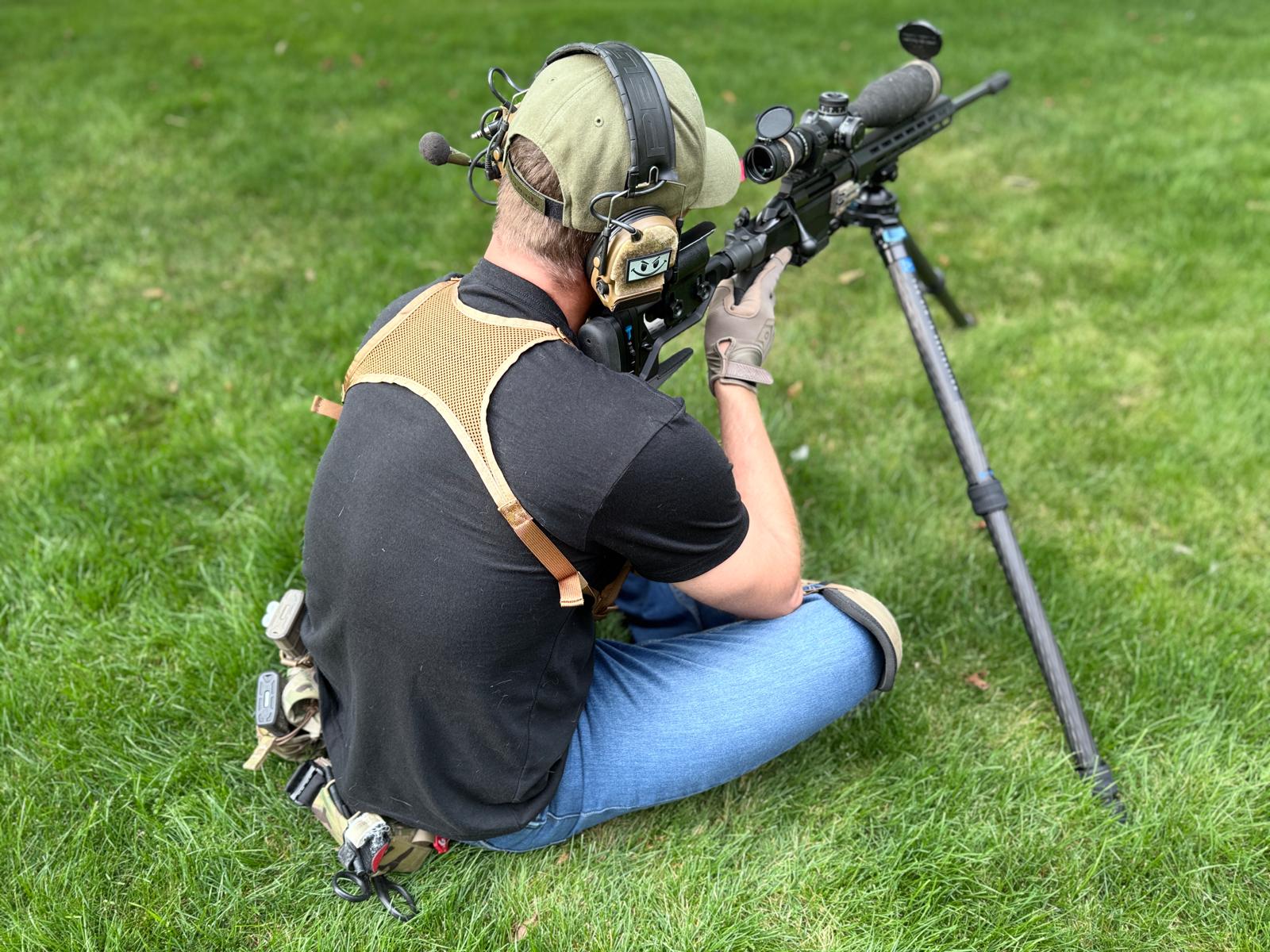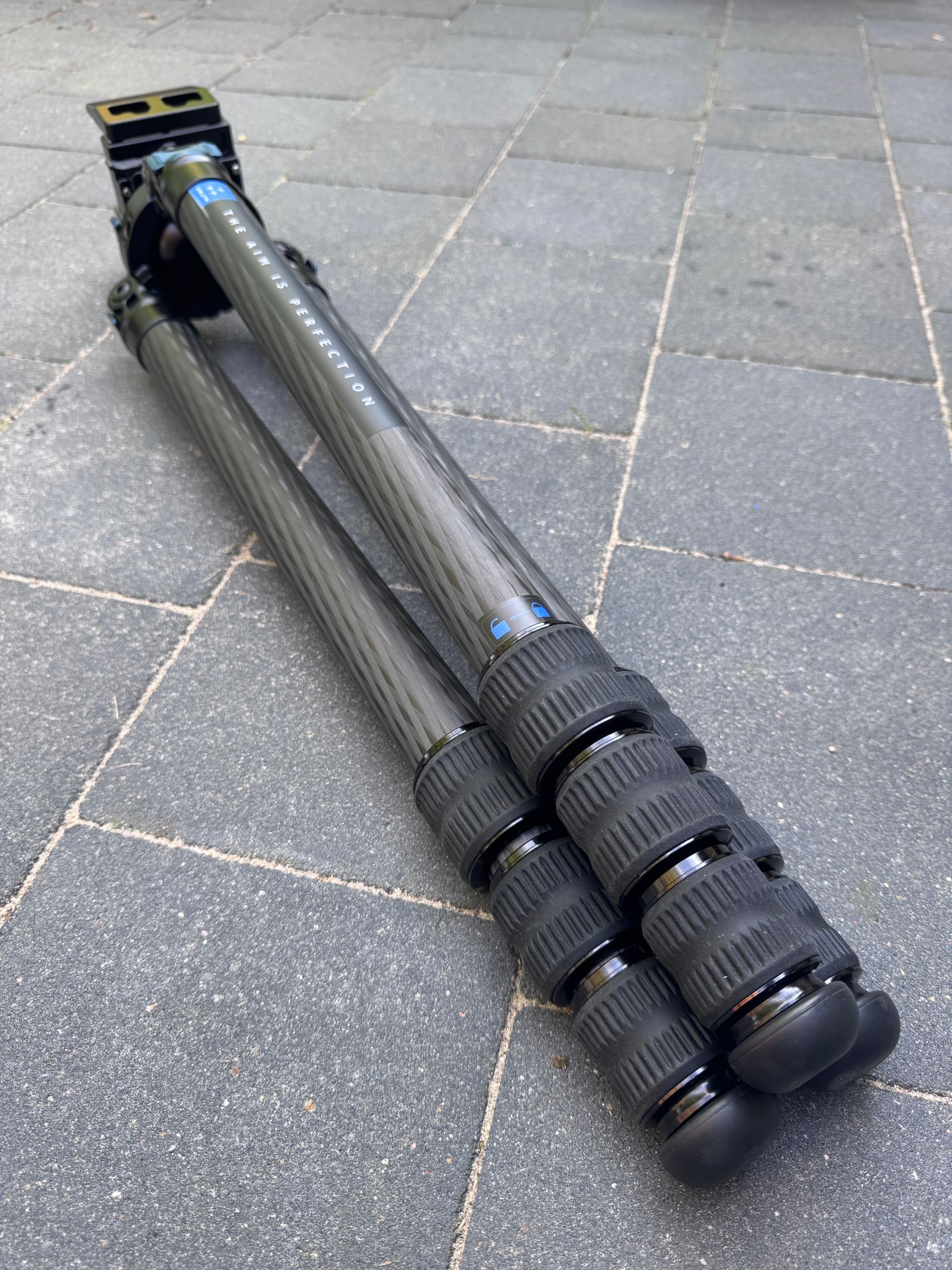The dynamic growth of shooting and outdoor disciplines, both worldwide and in Poland, has led to a multitude of accessories that shooters (to a greater or lesser extent) need to achieve their intended results, whether it’s achieving cloverleaf groups on a target or hitting selected game. In addition to shooting bags and rests, or Kestrels, one such accessory appears to be the tripod, known among hunters as a shooting stick.
Construction of DELTA CARBON TRIPOD
Let’s start with the basic technical specifications of the tested tripod. The accessory is primarily made of carbon-fiber-reinforced composite and weighs 2,300 grams, excluding the clamp. The folded length of the tripod is 63 cm, with a diameter of 14.85 cm. The tripod can be extended to a maximum height of 165 cm, with a minimum usable height of 14.4 cm. The ball head has a diameter of 65 mm and can be tilted up to 47.5 degrees, as well as rotated a full 360 degrees. The maximum load capacity of the Delta Carbon Tripod is 30 kg.
Depending on the configuration, the manufacturer has assigned the product two catalog numbers: SKU DO-9950 and the “richer” version I tested, SKU DO-9951, which comes with a clamp (SKU DO-9960) weighing 525 g.
In addition, the set includes interchangeable rubber feet and metal spikes, which can be used depending on the terrain where the tripod is employed. It also features an ARCA-Swiss/Picatinny adapter that allows mounting to a firearm, depending on its interface, and a camera adapter with 1/4” and 3/8” screws. The whole set comes packed in a sturdy case with a handle and a carrying strap.
The manufacturer also offers other accessories compatible with the tripod, including a binocular adapter (SKU DO-9962) and a clamp mount for binoculars (SKU DO-9961).

DELTA CARBON TRIPOD ST with accessories
The tripod clamp is made of T6061 aircraft-grade aluminum, CNC-machined and anodized, which gives it high resistance to corrosion, abrasion, and mechanical damage. The tightening knob operates smoothly, quietly, and with minimal resistance, ensuring that securing the firearm is trouble-free. The minimum jaw width is 29 mm, and the maximum is 68 mm. The interior of the clamp is lined with three rubber panels that provide proper grip and friction while protecting the rifle from scratches and scuffs. Moreover, the use of safety stop screws prevents the mount from accidentally slipping out of the head during sudden movements or shocks. At the bottom of the clamp, there are also threaded 1/4″ and 3/8″ holes, allowing compatibility with tripods that do not have an Arca rail. The mechanism, based on a dual-head “T”-shaped screw, enables smooth adjustment of the clamp’s width without shifting its central axis.
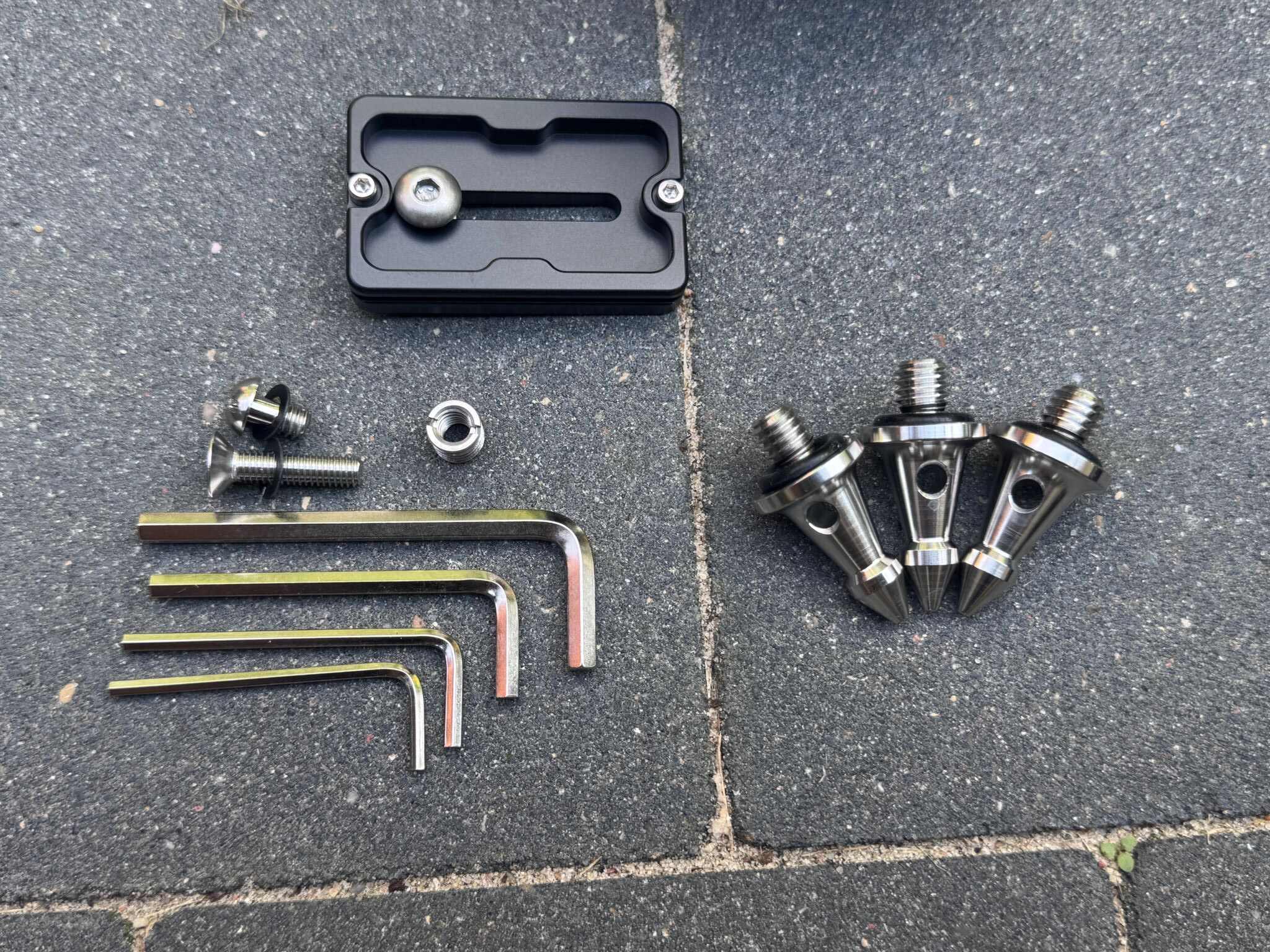
The tripod set includes a clamp, mounting screws, a camera adapter, and spikes
The primary material of the tripod is carbon-fiber-reinforced composite, used to build its telescopic legs. The legs are equipped with a twist-lock system, which makes height adjustment easy. This is done by simply twisting, extending, and tightening the leg again. The leg diameters are 36/32/28/25 mm, and the available spreading angles are 23, 55, and 85 degrees. An interesting feature of the leg design is the use of ventilation holes, which prevent air suction during extension and retraction, something that could otherwise hinder length adjustment.
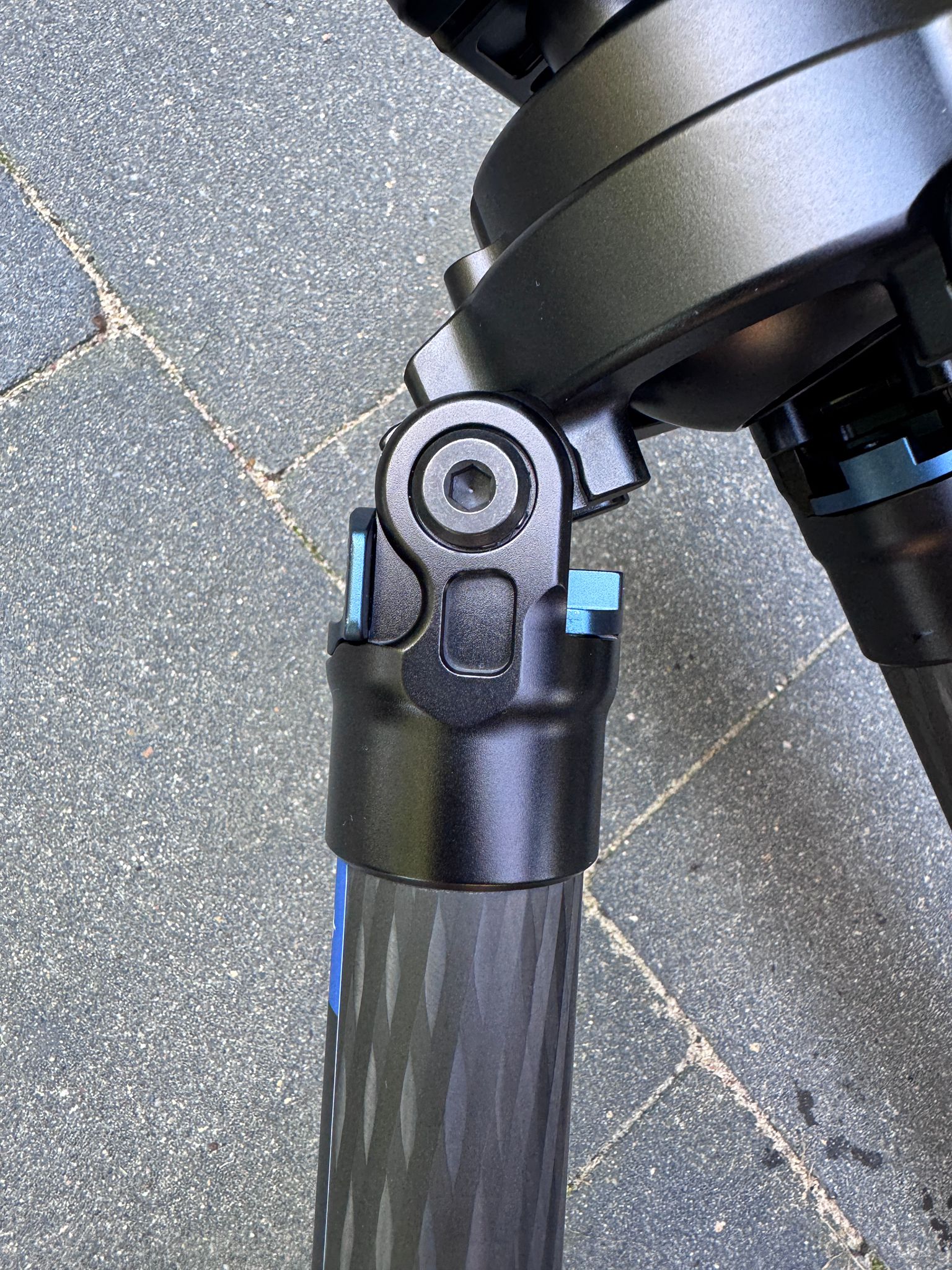
The carbon-fiber-reinforced composite legs feature twist-lock mechanisms, and the tripod is equipped with a ball-joint head
At the shooting range
I had the opportunity to test the Delta Carbon Tripod with my two rifles, a Tikka T3x Tac A1 chambered in .308 Winchester and an H&K MR 223 chambered in .223 Remington, firing shots from standing, kneeling, and sitting positions.
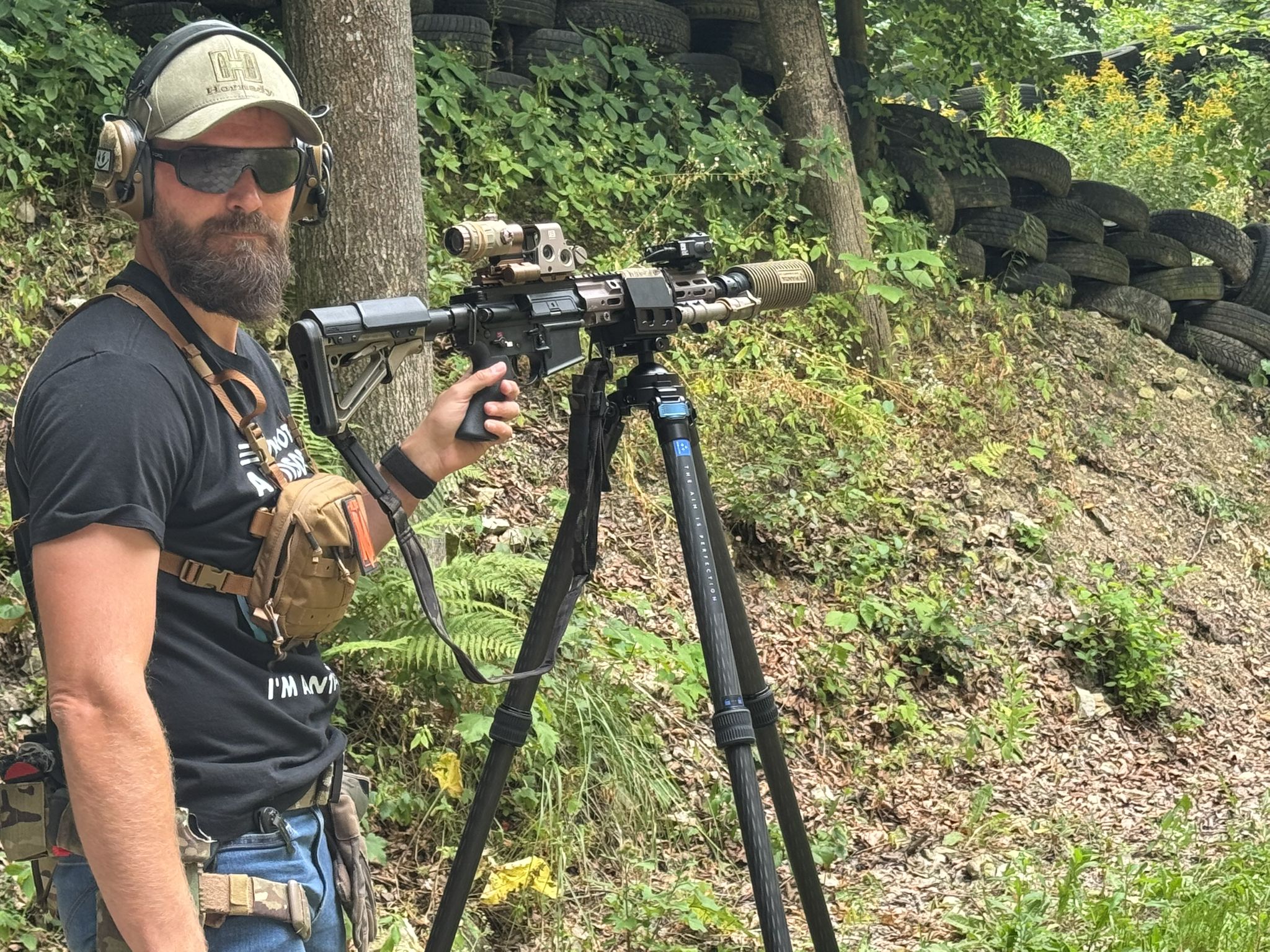
The tripod trials included shooting with firearms of various calibers and from different shooting positions…
The first thing that stands out is the tripod’s low weight. Without the clamp, the equipment is really light, and carrying it from place to place, even with the rifle attached, was no problem.
The leg angle is adjusted by releasing the blue metal locks. The first spread position is the default and does not require unlocking, but the subsequent ones do. Each leg is adjusted separately. The lock buttons extend beyond the outline of the legs, making them easy to grip.
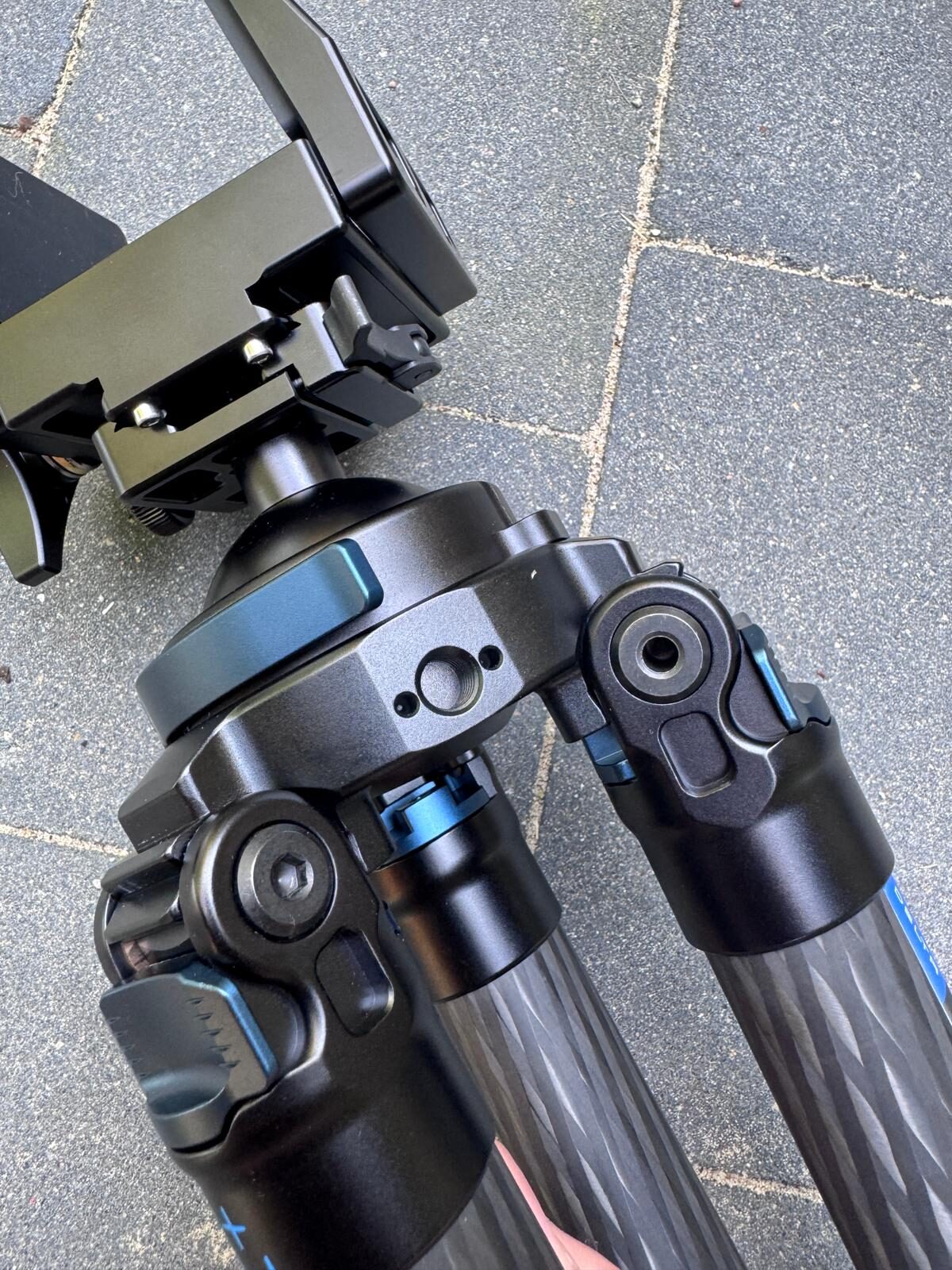
Adjustment of the tripod leg spread
The leg length is smoothly adjusted by twisting the rubberized knobs of the twist-lock mechanism. It is commendable that only a small turn is needed to lock or unlock the desired length. During adjustment, one can clearly hear the movement of air inside the carbon tubes that make up the legs, as well as the sound of air escaping through the ventilation holes mentioned in the previous section. Above the length adjustment knob, stickers have been placed indicating the direction in which to turn it to lock or unlock the clamp.
In my opinion, a drawback is the fact that the manufacturer does not include a strap for securing the tripod legs during transport. Perhaps this stems from the assumption that, since the set comes with a sturdy carrying case, the tripod should be transported in it, but let’s be honest, will that really be the case during competitions? The design of the tripod suggests that without a strap, during field transport, there is a risk that the tripod could accidentally unfold if it catches on a piece of equipment or the environment. On the other hand, during dynamic PRS-type competitions, is there really time to carefully fold up the tripod? A debatable matter.
Staying with the legs, let’s take a look at the interchangeable rubber feet and metal spikes. The manufacturer provides two sets of these end caps, which are swapped simply by screwing them into the bottom of the tripod legs. While installing the rubber feet poses no difficulty, screwing in and later unscrewing the spikes requires the use of one of the Allen keys supplied by Delta Optical, or another tool of similar diameter that fits into the hole at the tip of the spike.
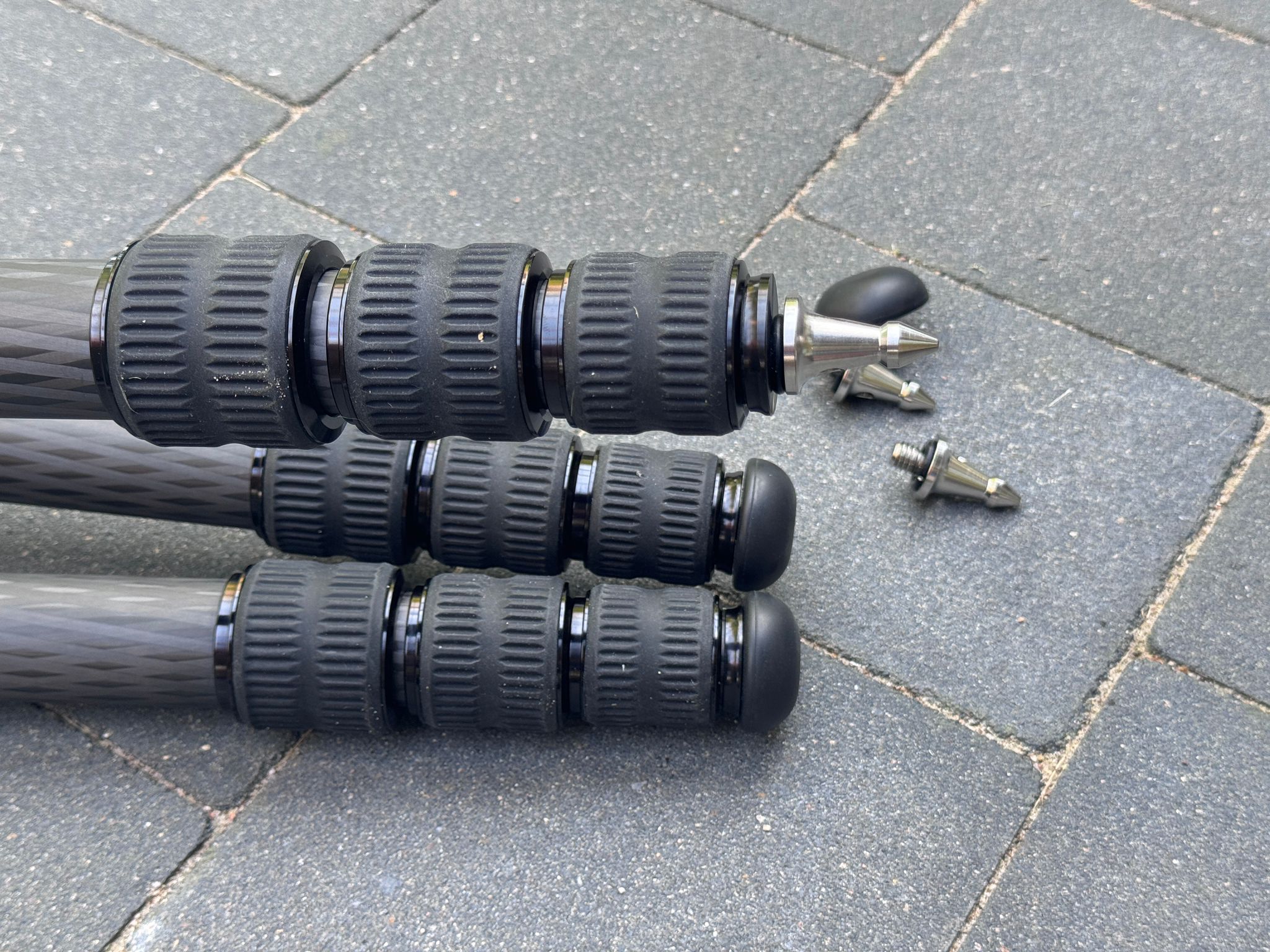
The legs are fitted with rubber caps on the ends, which can be replaced with spikes depending on the type of surface
One might ask whether a better solution would be the installation of spikes hidden inside the rubber feet, as is the case with BOG DeathGrip tripods. This would eliminate the need to carry additional large parts separately and would speed up leg conversion during dynamic changes of the surface on which the tripod is set.
Range tests demonstrated that better stabilization is achieved when the spikes are installed and the tripod is placed on soft ground. While shooting, especially with a .308 Winchester rifle, I did not experience significant movement of the setup. With the rubber feet installed, however, tripod and rifle movement was noticeably greater. At this point, the question arises whether a counterweight for the rifle, sometimes used in the form of a backpack suspended under the tripod head, would help reduce unwanted movement. Unfortunately, the Delta Carbon Tripod does not offer this option. Naturally, these observations are subjective, and in the hands of a more experienced shooter, such movements may not occur. The above-mentioned “movements” were minimal or absent when firing a .223 caliber rifle.
The heart of the Delta Carbon Tripod is its ball head, which is integrated with the tripod body, lowering the center of gravity and increasing the overall stability of the structure. This component provides virtually unlimited adjustment of the rifle’s position. Heads of this type are not yet standard in cheaper designs, which is an added value of the Delta Optical product. The head operates smoothly, and a prominent lever provides stabilization; its slightest movement secures the rifle, meaning that only a minor adjustment is needed to lock the weapon in position. Compared to knobs used in competing designs, the solution proposed by Delta seems more intuitive. The size of the adjustment lever is large enough to be operated with two fingers, the index finger and thumb, while holding the tripod leg with the rest of the hand.
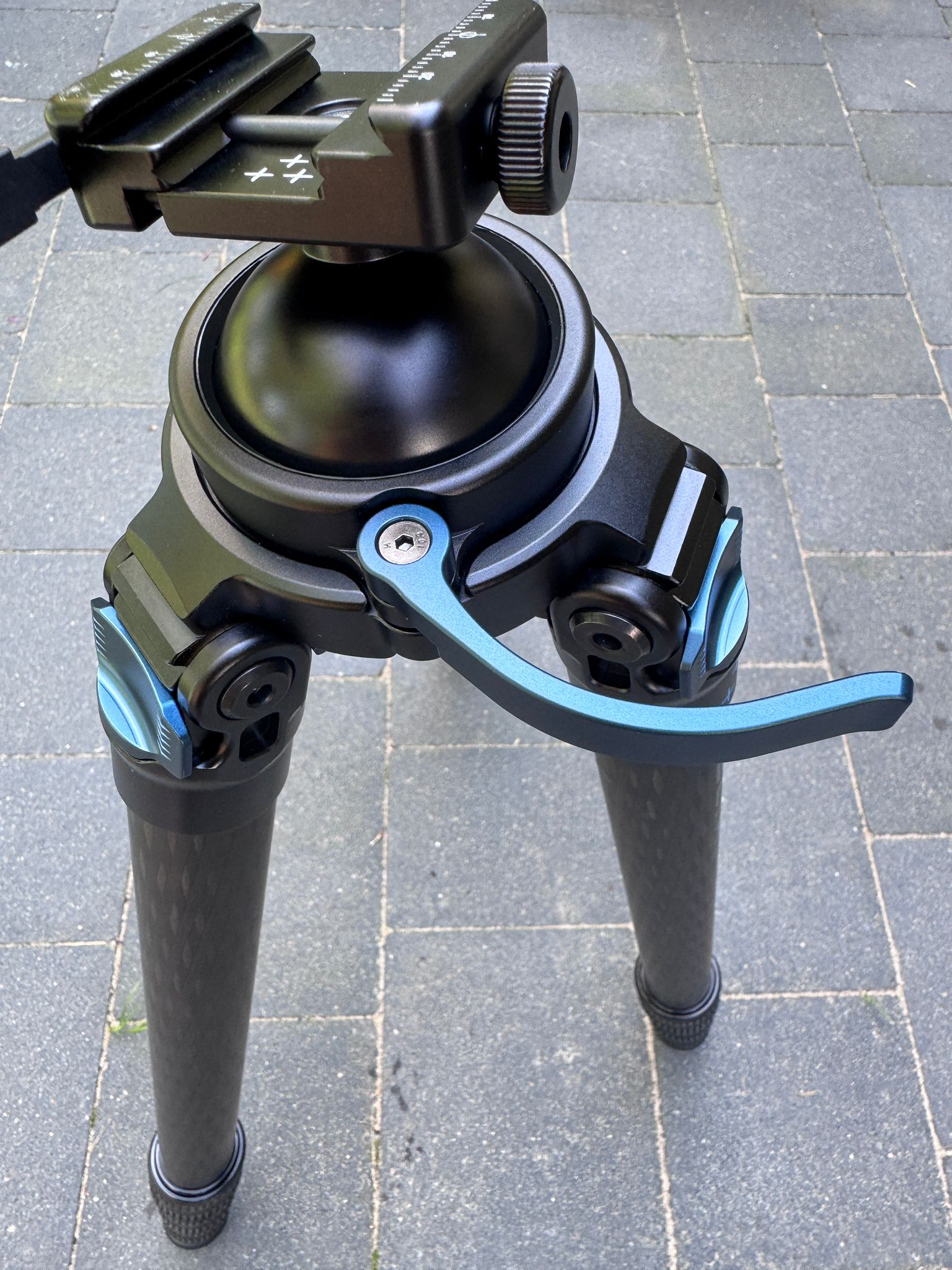
Tripod head with the locking lever released
The tripod head features a rifle mount compatible with both the ARCA-Swiss rail and the standard Picatinny rail. Combined with the clamp provided by the manufacturer (included in the described, more expensive ST-C set), the user gets as many as three options for mounting the rifle. The mount is secured to the ARCA-Swiss or Picatinny rail with a QD lever and tightened with a knob. This ensures the gun is seated securely, and the entire mounting process is quick and intuitive. The mount also features a scale that enables precise adjustment of the rifle’s position. Interestingly, the manufacturer chose not to include a built-in level in the tripod design, which would have helped with proper setup.
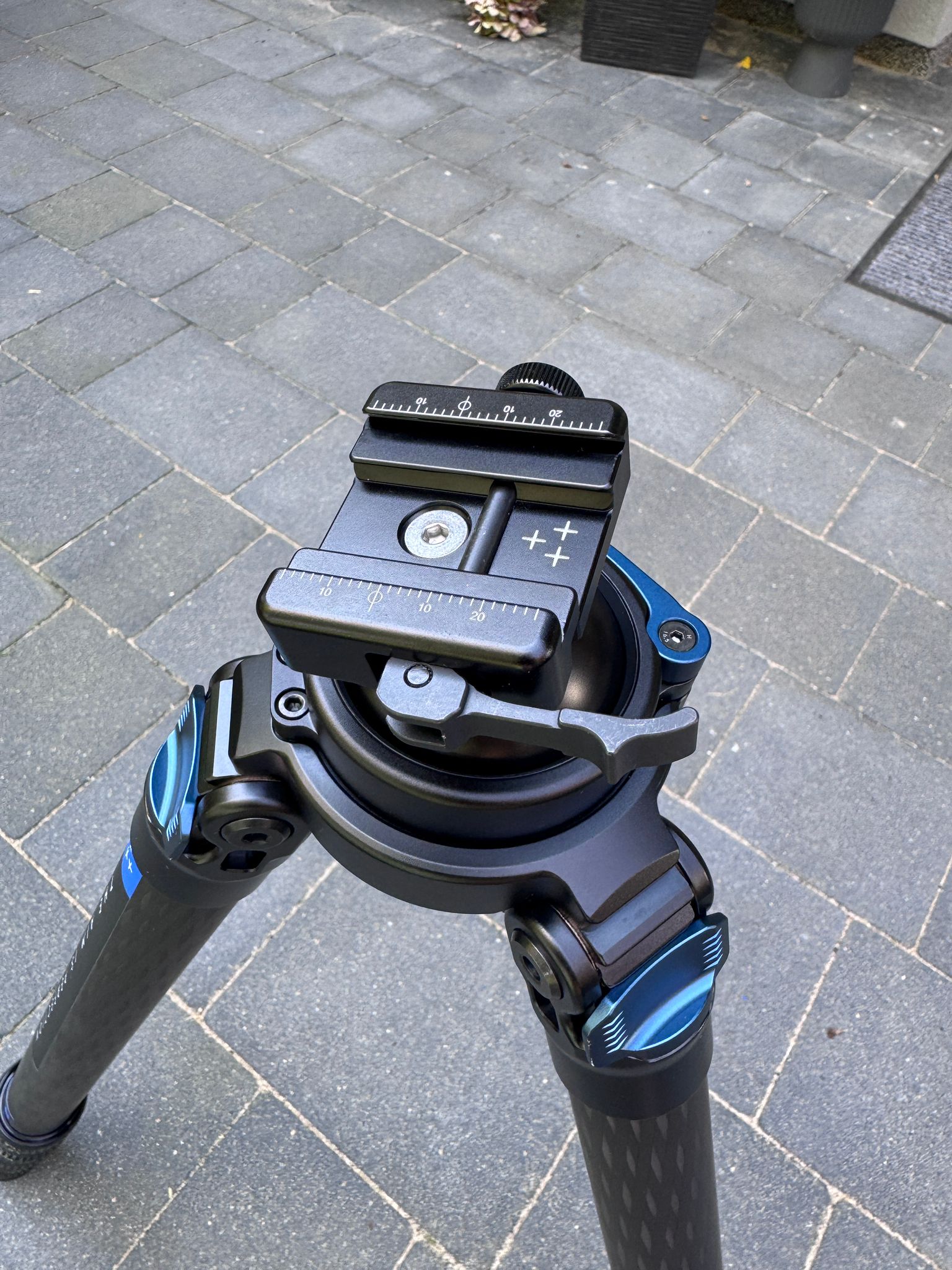
Mount using the Picatinny rail

Rifle mounted on a Picatinny rail mount / Photos: Mariusz Piwowar, Anna Piwowar
From my brief tests, it became apparent that better rifle stabilization is achieved by mounting the rifle using an ARCA/Picatinny mount. This method guaranteed zero play and quick readiness to fire. The clamp (or “jaw,” as the manufacturer refers to it) is a good accessory if we can devote more time to tightening it properly and allow for a bit more play. Naturally, using the clamp also requires adjusting the pressure, which retakes time. Verdict: The clamp is best suited for hunting, while ARCA-Swiss/Picatinny is the way to go for sport shooting.
Final reflections
The Delta Carbon Tripod ST-C makes a positive impression, even on someone not very experienced with this type of equipment, primarily due to its build quality and lightweight design. Other positives include a reasonably competitive price, just over two thousand for a complete tripod with clamp, as well as smoothly operating adjustment mechanisms. The case also looks solid, along with the included accessories such as adapters, wrenches, and screws. The individual components of the construction operate smoothly and quietly. On the downside, one should note the absence of a strap for securing the tripod legs during transport, the lack of a built-in level, and the absence of a hook or attachment point for a counterweight. These small features would have made the design complete, though they likely would have raised the price somewhat. Nevertheless, as a novice, I found the new Delta Tripod Carbon ST-C very appealing, and it’s not unlikely that it will find a place in the cabinet next to my Tikka one day.
Acknowledgements
The MILMAG editorial team would like to thank Wojciech Mielniczenko, president of the TG Sokół club in Lublin, for providing access to the shooting range in Urzędów for the photo session and testing of the DELTA CARBON TRIPOD ST-C.
The author would also like to thank Łukasz, a soldier of the Polish Armed Forces, for his support in conducting the tests.



